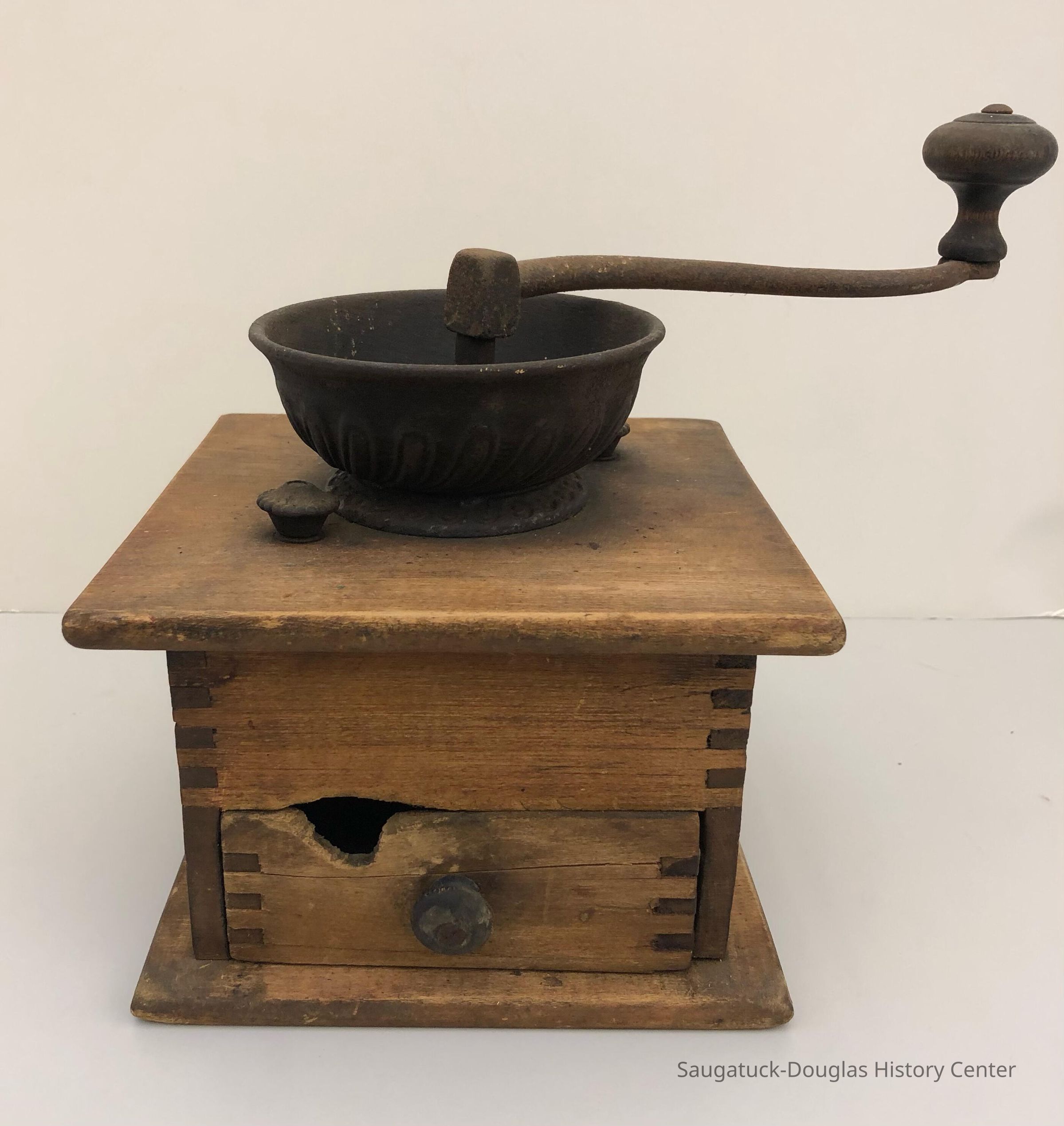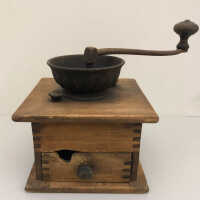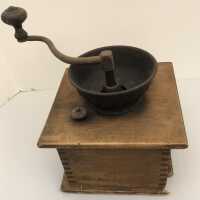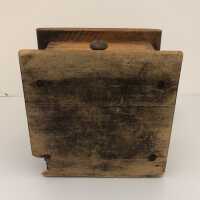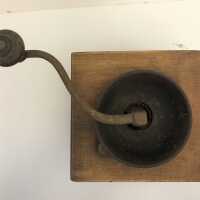Coffee Mill
Object/Artifact
Morning coffee has been a necessity for centuries, and there have been numerous patents for coffee-making machines. The first American patent was given to Thomas Bruff Sr. in 1798. Coffee grinders, also called coffee mills, were needed to grind the coffee beans to cook with water to make coffee. The mills were hand-cranked until 1938 when the first electric models were made. Most collectors search for early wall-mounted or box-type mills. They were made of wood or glass with a cast iron crank. Coffee-mill companies also used ceramics, plastic or attractive metals later in the 1900s. Most coffee mills had the name of the brand of coffee on the front or at least the word “coffee.” “Koffee” is not a misspelling; it is the German word for coffee. On the back or side of the coffee mill, there usually is a serial number that can be dated with the help of information found online or in “The MacMillan Index of Antique Coffee Mills,” a book by Joseph E. MacMillan. There also may be colorful pictures like the ones seen on a patriotic coffee mill, which was decorated with a flag and a picture of Theodore Roosevelt on his horse. It sold recently for $265 at a Hess auction.
